Bicol Express Gising-gising Recipe
There is always something distinctly fun about eating a meal that is known to pack a punch. Some of us prefer adding hot sauce, or some chili flakes here and there. But of course, the best spice probably comes from integrating some of that delicious chili pepper right into the heart of the dish. For this recipe, we’ll be putting together two well-known spicy Filipino dishes doing just that. Bicol Express Gising-gising lovingly mixes that chili pepper into our stew, which helps that heat latch on to the meat and other ingredients amazingly.
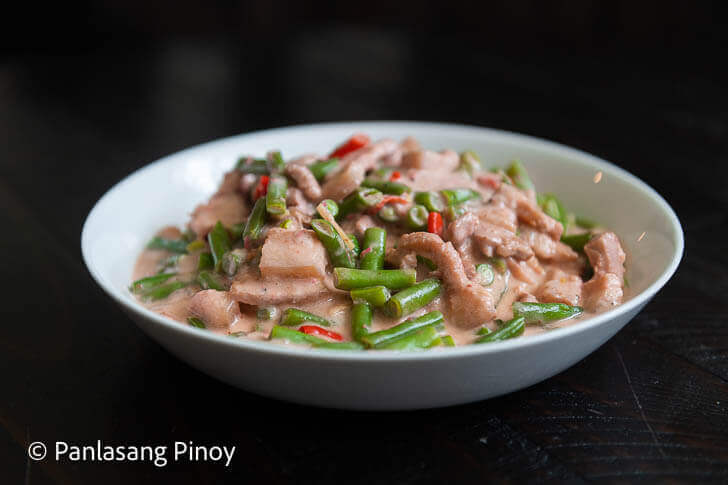
We also make use of heaps of coconut milk for this recipe. After all, its creaminess makes for an exquisite marriage of flavors with the spiciness of our chili pepper. But let’s start by getting down to the basics, and talking about the two dishes we’re actually combining for this recipe:
What are Gising-gising and Bicol Express?
Coming from Pampanga and Nueva Ecija, Gising-gising is a classic Filipino dish popular for the heat it brings in from chopped chili. It comes as no shock then that the English translation of it’s name is “Wake up” twice, as that exciting bite is sure to stir you and your taste buds awake!
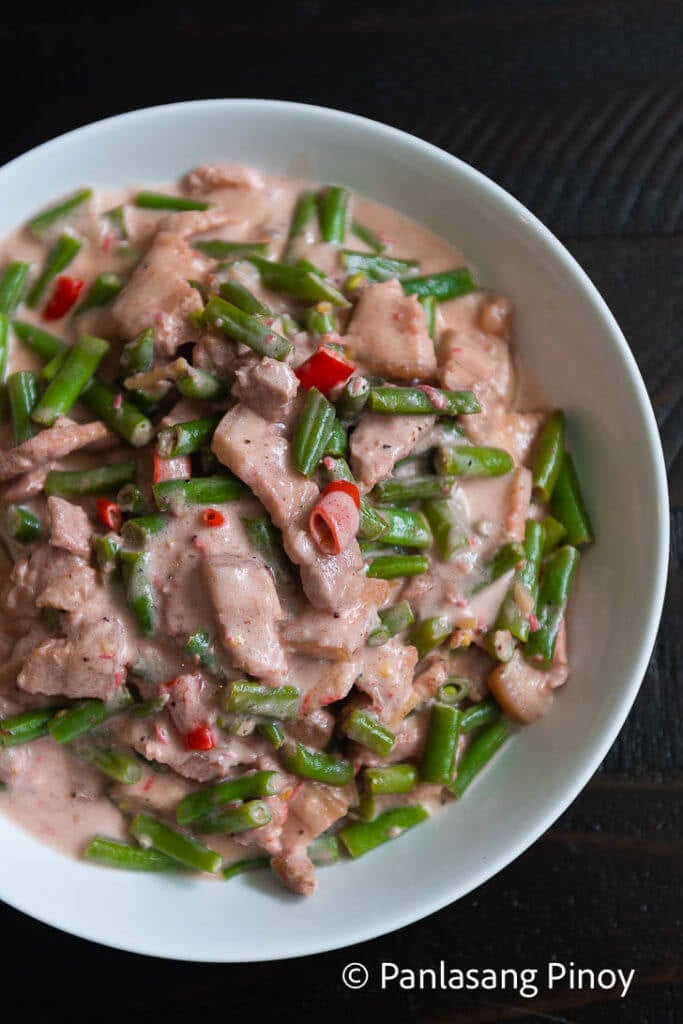
People also love this dish for the copious amount of long green beans or sigarilyas it has. We love the distinct crunch and flavor that sigarilyas provides any recipe it is part of. Made of coconut milk, bagoong or shrimp paste, ground pork and more appetizing ingredients, Gising-gising is a beautiful celebration of flavors you might not expect would go exquisitely well together.
And in the same way, Bicol Express mixes creamy and spicy together harmoniously. Not unlike Gisin-gising, it has a great deal of rich coconut milk, as well as chili. This is why people often compare these two recipes to one another. Both meat dishes that put chili and coconut flavors together, it might be easy to confuse them from one another. But the difference can definitely be tasted in many ways.
What is the difference between Gising-gising and Bicol Express?
For one, Gising-gising bears less heat than Bicol Express. Though satisfyingly fiery, it might be the better option if you don’t want anything too high on the spice level. And Bicol Express does not have bagoong for that distinct saltiness, which is why it might be a bit lighter on the savor.
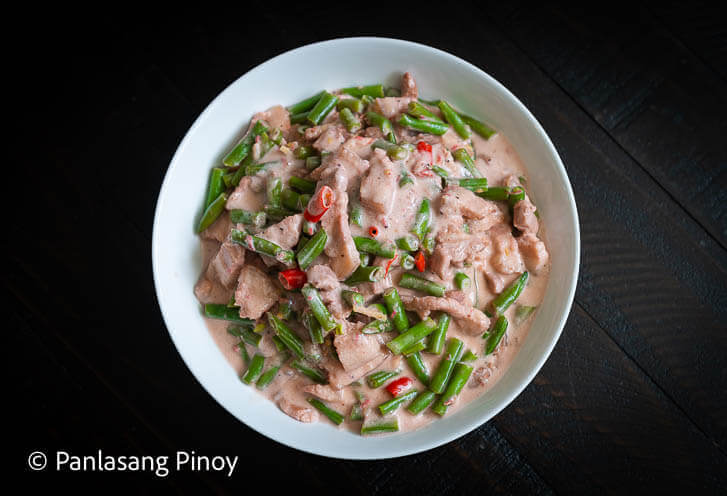
Moreover, it contains ground pork, while Bicol Express has pork belly or pork strips. In this way, Gising-gising is the considerably more affordable choice, but definitely doesn’t cut back on the flavor or the heartiness. I’ve got recipes for both as well, so you can check them out by clicking on the names of these recipes in the segment above.
Now that you’ve seen what sets them apart from one another, you might be wondering just how well it would work to have them in the same dish. For Bicol Express Gising-gising, we put their strengths together, serving a definitely explosive and flavorful meal. Keep reading for the steps to making this come to life!
How do I make Bicol Express Gising-gising?
We’ll begin by heating up just 1 tablespoon of cooking oil in a pan or a wok. Then we’ll place 1 lb. of sliced pork belly inside, then sear until we can see that enough oil is extracted. Because of the fat in the pork belly, we get more oil extracted, which is why we only initially use 1 tablespoon of cooking oil. And when we let it cook this way, we get a better texture for the meat.
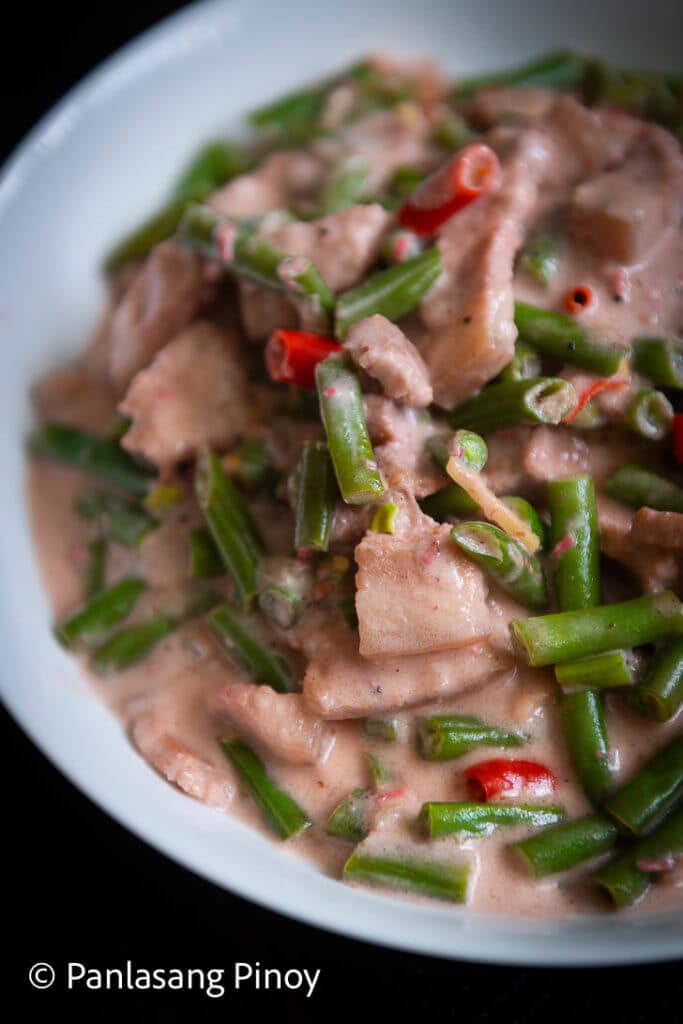
Make sure to keep searing the meat with high heat. Keep doing this until your pork belly or liempo is brown, and we get enough oil. Then you can integrate 1 onion, 4 cloves of garlic you’ve chopped, 2 thumbs of ginger, and 6 chili peppers. Let this cook until your onion is softened.
Let’s add some bagoong for that tasty savory flavor:
That would be your sign to put 3 ½ tablespoons of shrimp paste inside. For this ingredient, you have the option of using the raw type of bagoong or the cooked one. This is because we’ll end up cooking it anyway. Now sauté your mixture for 1 minute. Then add 4 cups of that creamy, white coconut milk inside. You can also use either the fresh or canned kind— both would work great for this recipe!
Then cover the pot or wok, and let the mixture boil. Once it’s boiling, you can put your Knorr Pork Cube inside to truly emphasize our meaty pork flavor. Stir this together, then cover again, and turn the heat down to the lowest setting. We will let this cook until the pork is sufficiently tender. For me, this took about 40 minutes. Feel free to taste the pork belly to see if the texture is to your preference already.
Afterwards, we’ll be adding an essential ingredient— 2 cups of long green beans for that added crunch. Cook this for 5 minutes, then add some ground black pepper to taste. The last step, and perhaps the best one, is to transfer this to your serving plate so we can be ready to dig in!
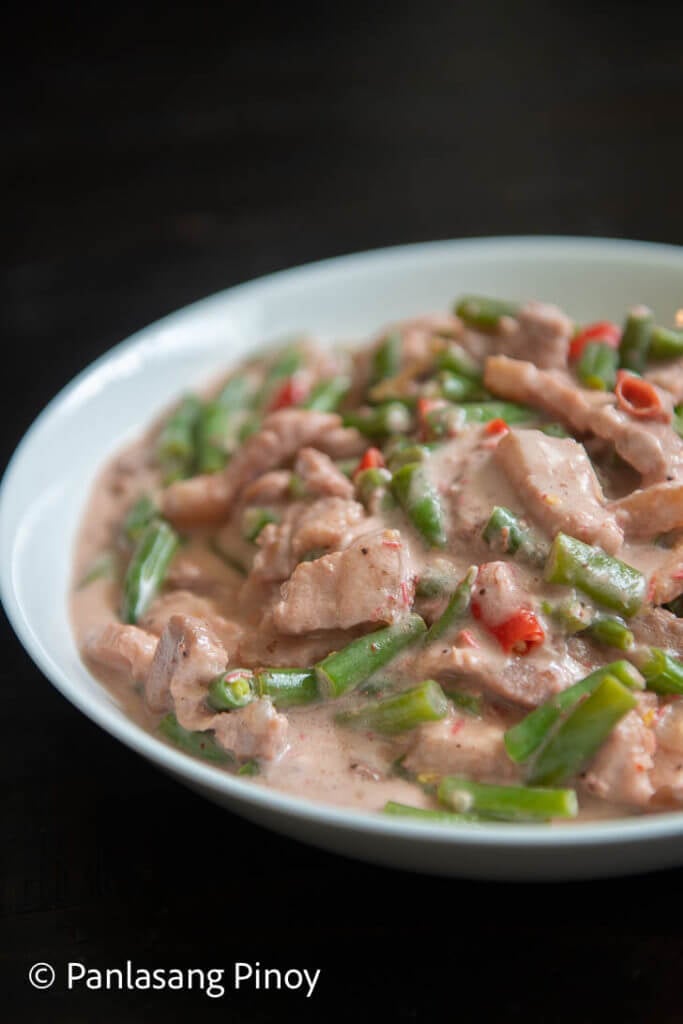
Now if you liked this recipe, don’t forget to leave some feedback below! Any suggestions and queries are also very much welcome.
Bicol Express Gising-gising
Spicy Pork and green beans cooked in coconut milk and seasoned with shrimp paste.
Ingredients
- 1 lb pork belly sliced
- 2 cups long green beans
- 1 piece Knorr Pork cube
- 4 cups coconut milk
- 1 piece onion
- 2 thumbs ginger
- 4 cloves garlic chopped
- 6 pieces chili pepper
- 3 1/2 tablespoons shrimp paste
- 1 tablespoons cooking oil
- Ground black pepper to taste
Instructions
-
Heat oil in a wok or pan. Add pork belly. Sear until enough oil is extracted from the fat.
-
Add onion, garlic, ginger, and chili pepper. Continue cooking until the onion softens.
-
Add shrimp paste (bagoong alamang). Saute for 1 minute.
-
Pour coconut milk into the pan. Cover and let boil.
-
Add Knorr Pork Cube. Stir. Cover the pan and adjust the heat to the lowest setting. Continue cooking until the pork gets tender.
-
Add long green beans. Cook for 5 minutes.
-
Season with ground black pepper.
-
Serve! Share and enjoy.
Nutrition
Calories: 1142kcal | Carbohydrates: 14g | Protein: 27g | Fat: 113g | Saturated Fat: 65g | Polyunsaturated Fat: 8g | Monounsaturated Fat: 32g | Trans Fat: 1g | Cholesterol: 231mg | Sodium: 772mg | Potassium: 885mg | Fiber: 2g | Sugar: 3g | Vitamin A: 406IU | Vitamin C: 14mg | Calcium: 133mg | Iron: 10mg
Watch how to cook it
[embedded content]
